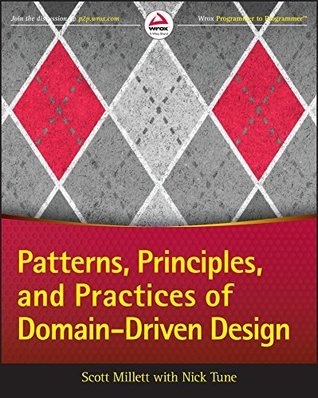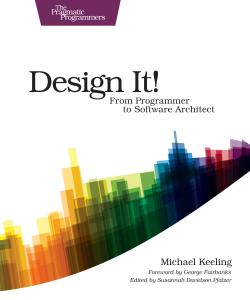Note that this list is not exhaustive, as it is automatically aggregated based on manually assigned categorizations.
If you notice a missing element, or think some of the items are wrongfully categorized, please create a bug/improvement ticket on our github issue tracker.
An overview of all tags used in this publication can be found in our tag list: go to overview
Patterns: architecture
description:Converting system characteristics into a structured solution that meets the technical and the business expectations.
Resources: architecture
Patterns, Principles, and Practices of Domain-Driven Design
( permalink )Millet, S. & Tune, N. (2015) Patterns, Principles, and Practices of Domain-Driven Design. Wrox. isbn: 1118714709.
Millet and Tune are some of the forerunners in the field of Domain-Driven Design, an architectural approach that aims to further allign business concepts and their technical implementation. The authors focus on the core concepts of a domain-driven system development approach, and offer practical advice to the reader on how to apply the principles and ideas in their daily endeavours. As the book dives deep into advanced concepts, it is advisable to pick this up later in your journey, after you have gained experience working on real systems.
Design It: From Programmer to Software Architect
( permalink )Keeling, M. (2017) Design It: From Programmer to Software Architect. The Pragmatic Bookshelf. isbn: 1680502093.
In “Design It,” author Michael Keeling provides valuable insights into the essential responsibilities of a software architect.
Through the lens of a hypothetical project, readers embark on a journey through various project stages.
The book strikes a balance between theoretical knowledge, practical methodologies, and a profound exploration of guiding principles.
Keeling skilfully conveys the pivotal role of a software architect, highlighting their ability to bridge the gap between the business’s requirements,
the technical team’s needs, and the broader operational context. “Design It” offers readers a comprehensive understanding of software architecture,
making it a valuable resource for programmers aspiring to become adept software architects, as well as for experienced architects wishing to refresh
their knowledge of modern techniques.

